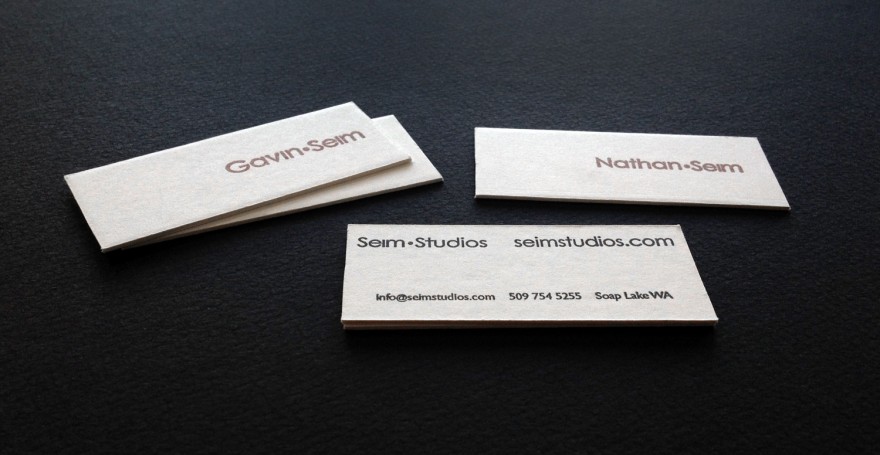
These are the new gallery cards I made up for Nathan and I. I’m always trying new card designs, but I’ve been wanting something with a hand made impact that can be produced easily and on demand here in the studio.
They’re made using a heavy 4 ply white mount board and self inking rubber stamps that cost about twenty dollars each. Using our straight mat cutter board, we cut slices about 3.5in x 1.5in from the 32×40 sheets of board that cost less than ten dollars each. The cards are them stamped, our names on the front in brown with lots of open space. The back is stamped with the studio details in black.
The neat thing is we can make thee on demand. They’re beautifully thick and we can change the look at any time with a fresh stamp. Making it far less expensive than order small batches of custom cards of this weight. They’re minimal, but based on the board price and the cost of the stamps, these cards come out costing about .07 each if the stamps are only used for about 1000 cards before being updated. They can be re-inked of course and be used for far larger quantities. Of coarse there’s some labor involved, but they don’t take long and it’s part of the fun.
Just one of the many ways to produce hand worked a card with a bit of impact. So far I’m enjoying them… Gav






